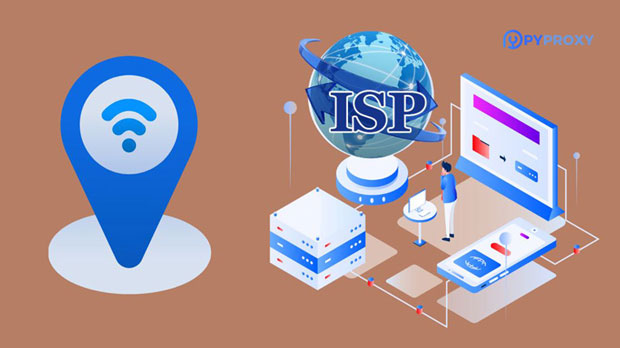In the modern digital landscape, enterprises are increasingly reliant on proxy sites for managing web traffic, enhancing security, and monitoring user activities. However, while proxy sites offer multiple benefits in traffic management and data filtering, there are certain limitations to their effectiveness in enterprise-level traffic monitoring and log auditing. These limitations often stem from performance issues, lack of visibility into encrypted traffic, and challenges in scaling with increasing traffic volume. In this article, we will explore the various restrictions that proxy sites impose on enterprise-level traffic monitoring and log auditing, offering insights that can help organizations make informed decisions when selecting tools for network security and data management. 1. Limited Visibility into Encrypted TrafficOne of the major limitations of proxy sites is their limited ability to monitor and audit encrypted traffic. With the widespread adoption of HTTPS (Hypertext Transfer Protocol Secure) across websites and applications, proxy sites face significant challenges in inspecting encrypted data. Since most proxy servers work by routing traffic through a central server, they are unable to decrypt and inspect traffic that uses strong encryption. This means that sensitive data, such as login credentials or financial transactions, may go undetected by traditional proxy-based monitoring solutions.In enterprise environments where protecting sensitive information is a priority, relying solely on proxy sites to audit encrypted traffic can result in a major gap in the network security posture. Additionally, businesses that rely on SSL/TLS protocols for encryption may find themselves unable to effectively monitor traffic for malicious activities, data breaches, or policy violations.2. Performance and Latency IssuesProxy sites, by their very nature, route traffic through an intermediary server, which can introduce performance bottlenecks. This added layer of routing can cause delays in processing requests, leading to higher latency and slower web browsing experiences. For enterprises that handle high volumes of traffic or require real-time data processing, this latency can have a significant impact on operational efficiency.Moreover, performance issues are exacerbated when proxies are deployed at a large scale. With growing network demands and increasing user activities, proxy servers may struggle to maintain optimal performance, particularly if they lack adequate hardware or resources to handle the volume of traffic. As a result, enterprises may experience slower data transfer speeds, interruptions in service, or increased response times, affecting both employee productivity and customer satisfaction.3. Lack of Granular Control and CustomizationWhile proxy sites provide a high-level view of traffic data, they often lack the granularity required for in-depth monitoring and log auditing. Enterprises typically need to capture detailed logs of network activities, including specific user actions, file transfers, and application interactions. Proxy sites, however, may only record general traffic patterns, which are insufficient for detecting intricate security threats or performing comprehensive audits.Without granular control, it becomes difficult for security teams to pinpoint the source of suspicious activities, such as internal data breaches or malware infections. Furthermore, customization options for adjusting proxy filtering rules and log parameters can be limited, making it harder for enterprises to tailor their monitoring and auditing systems to meet specific security and compliance requirements.4. Scalability ChallengesAs organizations grow and their network infrastructures expand, scalability becomes a crucial concern. Proxy sites, particularly traditional ones, often face difficulties in scaling to accommodate larger volumes of traffic. When enterprises experience an increase in web traffic or the addition of new users and devices, the proxy servers must be able to handle the surge without compromising performance or security.Scaling proxy-based monitoring systems can be resource-intensive and costly. Organizations may need to invest in additional hardware or infrastructure to maintain high levels of traffic inspection and log auditing. Moreover, proxy solutions may not be able to seamlessly integrate with existing security tools, leading to inefficiencies in monitoring and managing logs across various platforms.5. Incompatibility with Modern Web ApplicationsModern web applications often use advanced technologies such as single-page applications (SPAs), dynamic content loading, and real-time updates. These applications rely on complex client-server interactions that may not always be captured by traditional proxy sites. Proxy servers typically inspect traffic at the network layer and may miss critical data exchanges that occur within web applications themselves.As a result, enterprise security teams may struggle to gain full visibility into the activities within web applications. For instance, proxy servers may fail to monitor API calls, WebSocket communication, or other non-traditional traffic types that are integral to modern applications. This lack of visibility can prevent enterprises from detecting and responding to threats within these applications in real-time.6. Legal and Compliance ConcernsEnterprises that operate in regulated industries must comply with strict data protection and privacy laws, such as GDPR or HIPAA. Proxy sites, especially those that handle sensitive personal data, can raise compliance concerns. Depending on how traffic is routed and logged, proxy solutions may inadvertently violate regulations by mishandling user data, failing to secure logs properly, or retaining logs for longer than permissible periods.In certain jurisdictions, proxy servers may also face challenges in terms of data sovereignty, as the physical location of the proxy server could impact the legality of monitoring and data retention practices. Ensuring that proxy sites adhere to the regulatory requirements of the enterprise’s operating region is a significant concern that must be addressed during the deployment and management of proxy-based traffic monitoring systems.7. Over-reliance on Proxy Sites for SecurityA common pitfall for enterprises is over-relying on proxy sites as the primary security measure. While proxy servers offer valuable features like traffic filtering and access control, they should not be seen as a comprehensive solution for network security and monitoring. Proxy sites alone cannot address all aspects of security, such as endpoint protection, intrusion detection, or malware analysis.Relying too heavily on proxy servers can create a false sense of security, leading enterprises to neglect other essential security practices. For a robust security posture, organizations must employ a multi-layered approach that integrates proxy sites with firewalls, intrusion detection systems (IDS), and other security tools to ensure comprehensive protection.While proxy sites offer important capabilities for managing web traffic, they come with several limitations that enterprises must consider. From the inability to inspect encrypted traffic to performance issues, scalability challenges, and regulatory concerns, relying solely on proxy-based solutions for traffic monitoring and log auditing may not be sufficient for modern enterprises. To achieve a robust and secure network environment, organizations should complement proxy-based monitoring with additional security measures and consider the specific needs of their infrastructure, compliance requirements, and growth trajectory. Understanding these limitations is key to making informed decisions when selecting traffic monitoring and log auditing solutions for the enterprise.
Jun 06, 2025
![arrow]()


















































